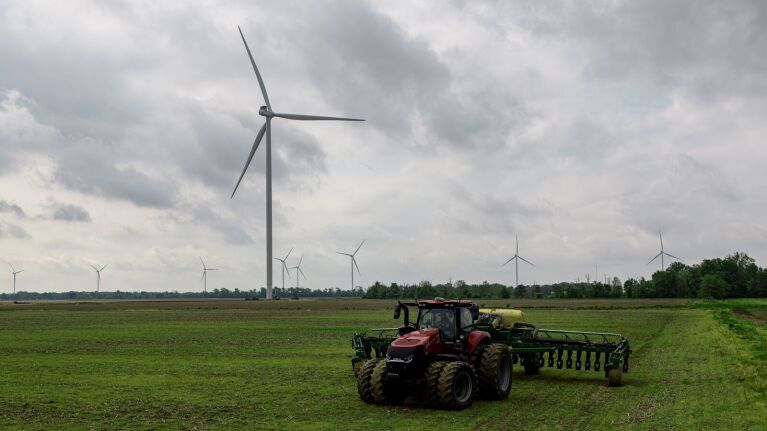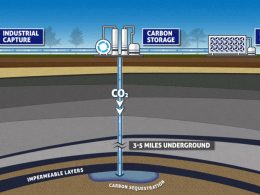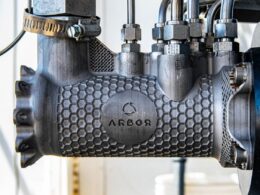Farming, a traditionally high-risk and unpredictable industry, is becoming even more challenging due to climate change and extreme weather. However, farmers are finding new opportunities to grow their businesses and combat climate change by adopting agrivoltaics, which combines solar energy production with agriculture, and dual land-use projects involving wind turbines on farms. Amazon is backing several of these initiatives as part of its commitment to achieve net-zero carbon emissions by 2040 under the Climate Pledge.
In Tunica County, Mississippi, third-generation farmer Abbott Myers has diversified his farm’s income by hosting the state’s first wind farm. In Garrard County, Kentucky, Daniel Bell, a sheep farmer, has transformed his operation into a multi-generational business by providing grazing services to a local solar farm. In Madison County, Ohio, researchers from The Ohio State University are studying the integration of farming and large solar energy projects.
These renewable energy projects benefit not only farmers but also renewable energy developers and local communities. The benefits include increased revenue for farmers, healthier ecosystems, and more efficient land use. Renewable energy developers also gain access to more land for their projects, while local communities see job creation, tax revenue, and new sources of clean energy.
As the world’s largest corporate buyer of renewable energy since 2020, Amazon has invested billions in more than 500 solar and wind projects globally. These investments are driving innovation and supporting the development of new energy projects, including three agrivoltaic farms and one wind farm on agricultural land, which are bringing tangible benefits to farmers and communities worldwide.
In Tunica County, Mississippi, Amazon has invested in the state’s first utility-scale wind farm, developed by AES. The 184 MW project includes 41 wind turbines spread across 14,000 acres of farmland, including land owned by Abbott Myers. This dual-use operation allows farming activities such as rice, soybean, corn, and wheat cultivation to continue alongside wind energy production. The project is expected to bring tens of millions of dollars in tax revenue to the county and school district while providing additional income to the Myers family.
In Kentucky, Amazon has enabled the Turkey Creek solar farm, the state’s first utility-scale solar project. The 50 MW project is managed by Silicon Ranch, which has partnered with local sheep farmer Daniel Bell. His flock of nearly 1,000 sheep graze beneath the solar panels, helping maintain the land while aerating the soil and enhancing biodiversity. This partnership has allowed Bell to expand his business, transforming it into a full-time, multigenerational farm. The sheep also supply meat to Whole Foods Market, an Amazon-owned grocery chain.
In Madison County, Ohio, Amazon is backing one of the first US solar projects to integrate forage crop production between rows of solar panels. The Madison Fields Solar Project, developed by Savion, spans 180 MW and involves a research collaboration with The Ohio State University to explore scalable farming methods within solar fields. Crops like hay, alfalfa, and soybeans are grown alongside 400,000 solar panels, contributing to soil health and biodiversity while reducing the need for nitrogen fertilizers. Revenues from harvested crops are reinvested into the research.





















